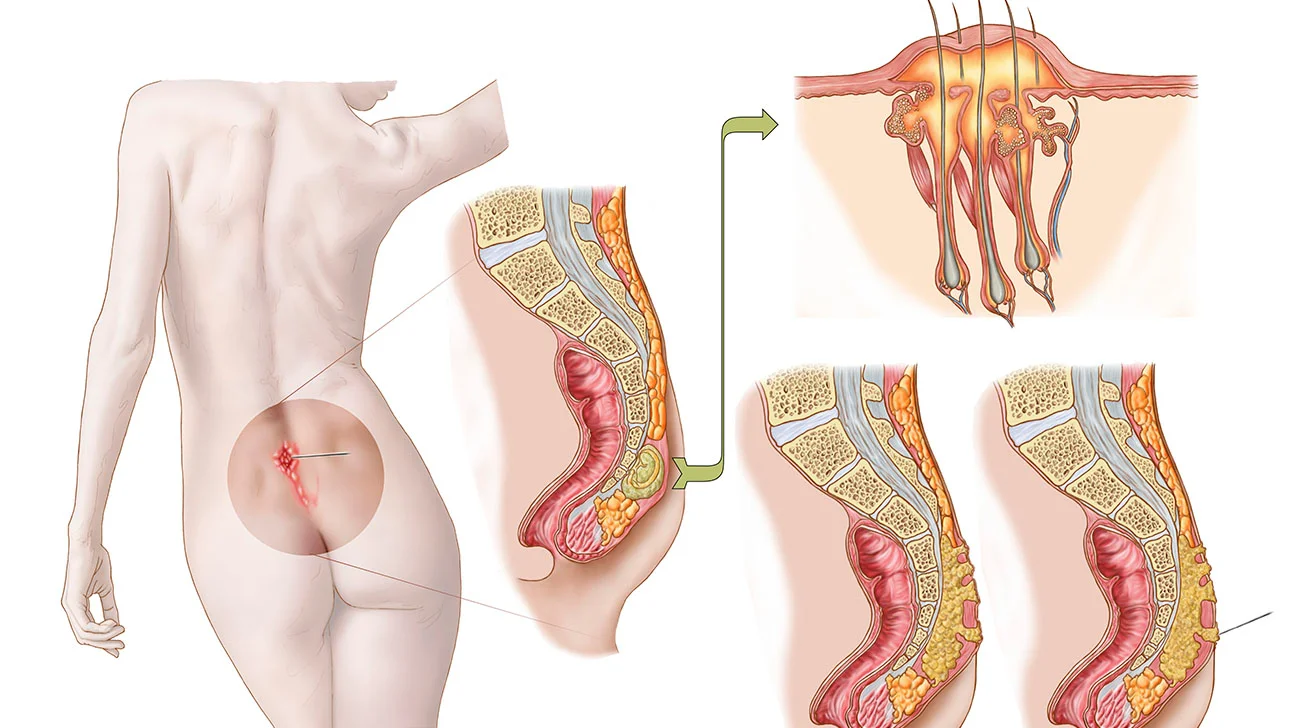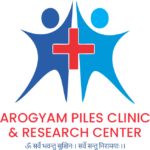
Pilonidal sinus, also known as a pilonidal cyst, is a condition that typically occurs near the tailbone. It begins as a small dimple in the skin, which can then become infected and develop into a cyst. Eventually, the cyst may burst, leading to the formation of an opening known as a pilonidal sinus. This condition is most commonly seen in young males between the ages of 15 to 35 years. Although the exact cause of pilonidal sinus is not well understood, certain factors are thought to contribute to its development. In this blog our pilonidal expert doctor discuss about these factors and its prevention.
1. Young males between the ages of 15 to 35 have a higher susceptibility to developing pilonidal sinus, a condition that occurs due to hormonal fluctuations during the onset of puberty. This age group is particularly prone to this ailment due to the changes in their body’s hormonal balance, making them more vulnerable to developing cysts in the sacrococcygeal area. The increased levels of hormones during puberty can lead to the enlargement of hair follicles in this region, which can then become blocked and infected, resulting in the formation of pilonidal sinus. It is essential for young men in this age range to maintain good personal hygiene and seek medical attention promptly if they experience any symptoms related to this condition.
2. A sedentary lifestyle, characterized by prolonged periods of sitting, is a significant factor in the development of pilonidal sinus. When we spend extended hours sitting down, our buttocks endure constant pressure that can lead to the formation of pilonidal sinus. This condition, often referred to as “jeep seat” or “jeep disease,” occurs when hair follicles become inflamed and infected near the cleft of the buttocks due to the continuous strain caused by sitting. Therefore, it is essential to incorporate regular breaks and movement into our daily routine to reduce the risk of developing this painful condition.
3. Thick, coarse hair at the base of your back can be a troublemaker, as it’s more susceptible to pilonidal sinus. To keep this problem at bay, make sure to keep that area well-groomed by shaving it regularly. By staying on top of your hair maintenance routine, you can reduce the risk of developing pilonidal sinus and enjoy a smoother, healthier backside.
4. Individuals born with a congenital deep natal cleft face a higher likelihood of developing a pilonidal sinus. The presence of a deep crevice from birth creates a favorable environment for the accumulation of hair, debris, and bacteria, increasing the risk of infection and subsequent development of a pilonidal sinus. Proper hygiene practices and regular monitoring are essential for individuals with a congenital deep natal cleft to prevent potential complications associated with this condition.
5. Obesity is a significant factor that plays a role in the development of pilonidal sinus. When a person is overweight, excess body fat can put pressure on the lower back and buttocks area, leading to increased friction and sweat accumulation. This combination of factors creates an environment conducive to the formation of pilonidal sinus. The excess weight can also contribute to poor hygiene practices in these hard-to-reach areas, further exacerbating the risk of pilonidal sinus development. Therefore, maintaining a healthy weight through proper diet and exercise can help reduce the likelihood of this uncomfortable and often painful condition.
6. Wearing tight trousers can lead to friction in the buttocks area, which in turn can cause the development of a pilonidal sinus. This condition occurs when hair follicles become blocked, leading to the formation of a cyst or abscess. The constant rubbing and pressure from tight clothing can exacerbate this issue, making it more likely for the pilonidal sinus to occur. It’s important to be mindful of the clothing we wear to ensure proper airflow and reduce the risk of developing such uncomfortable and sometimes painful conditions. Opting for looser-fitting garments can help alleviate the pressure and minimize the chances of experiencing this problem.
7. Injuries to the tailbone region, often resulting from activities such as cycling or horseback riding, can lead to the development of pilonidal sinus. This condition occurs when hair follicles become blocked in the skin near the top of the buttocks, causing discomfort and sometimes infection. It’s important for individuals engaging in these types of physical activities to take precautions to protect their tailbone area and prevent potential trauma that could contribute to the formation of pilonidal sinus. Regularly checking the skin in this area for any signs of irritation or inflammation is a good habit to maintain, along with ensuring proper cushioning and support while cycling or riding to minimize the risk of injury. By staying vigilant and proactive, individuals can reduce the likelihood of experiencing the discomfort and complications associated with pilonidal sinus.
We have discussed causes and prevention of pilonidal sinus, when it comes to dealing with the treatment of pilonidal sinus, it’s important to consider all the available options for effective treatment. If you or someone you know is currently struggling with pilonidal sinus, seeking consultation with our expert in kshar sutra treatment for pilonidal sinus in Chandigarh could be the key to finding relief. Kshar sutra therapy offers a minimally invasive and non-surgical approach to treat pilonidal sinus, boasting the highest success rates and a minimal risk of complications, such as the likelihood of the issue recurring. By exploring this advanced treatment option, individuals can take proactive steps toward addressing their pilonidal sinus condition and achieving long-lasting results.
At Arogyam Piles Clinic, we understand the distressing impact of pilonidal sinus and offer specialized expertise in its treatment. Our clinic, located in Chandigarh, is renowned for its compassionate care and advanced medical solutions. We boast a team of experts specializing in Kshar Sutra therapy, a minimally invasive approach known for its high success rates and low recurrence risk. Trust Arogyam Piles Clinic for comprehensive care and lasting relief from pilonidal sinus discomfort.




